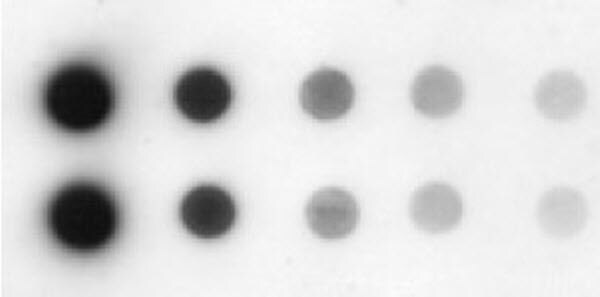

This is achieved by incubating the membrane with a proteinaceous liquid such as milk or serum.įollowing blocking, it is important to wash the membrane between each step to remove excess or unbound reagents. Transfer efficiency can be assessed prior to probing using a removable stain such as Ponceau S.ĭue to the high affinity of blotting membranes for proteins, after transfer it is important to block any remaining binding sites to prevent subsequent non-specific binding of the assay detection antibodies. Dry transfer is efficient and quick but offers less flexibility than the other methods. Semi-dry transfer is quicker and still offers flexibility but is less efficient than wet transfer for large proteins. Wet transfer is efficient and offers flexible buffering but is time-consuming.

Within electroblotting, there are also multiple strategies for transfer, known as wet, semi-dry and dry transfer. Proteins from the gel are carried across and attach to the membrane tightly. Here, the protein gel is sandwiched against the transfer membrane and an electrical current is applied. A number of techniques can be used for transfer, including capillary transfer, diffusion transfer and vacuum blotting, but by far the most common due to its speed and efficiency is electroblotting 8 (also called electroelution or electrophoretic transfer).

Proteins must be transferred from the protein gel to an appropriate membrane (typically nitrocellulose or polyvinylidene difluoride (PVDF)) to facilitate antibody probing. However, this type of control can be problematic when comparing models in which “control” proteins are differently expressed, such as degeneration models. Detecting expression of a ubiquitous protein that should be even between all of your samples, such as actin in whole cell and cytoplasmic samples, can also be used as a loading control and helps to ensure consistent transfer of protein samples to the membrane. Running a duplicate protein gel and developing with Coomassie stain 5 can help to remove this uncertainty as it will show the amount of total protein 6 in each sample lane and can reveal any loading inconsistencies. This could mean that there is twice as much of the target protein in that sample, or it could mean that more sample or a more concentrated sample has been loaded in one lane than the other. For example, when assessing a blot, the band from one sample may appear twice as bright as another sample. It is essential, especially when trying to compare protein expression between different samples, to know how much sample has been loaded as this may not be apparent from the blot alone. It is also important to load appropriate control samples and size marker ladders to enable interpretation of the final blot. Solids will impair the running of the gel and it is likely your protein of interest will remain in the stacking gel. If your protein of interest is in the insoluble fraction (e.g., cell membrane-bound proteins) investigate pretreatment methods to liberate and solubilize it first. For a clean image, samples are centrifuged to remove any solids, in order to load only the soluble fraction. The specific separation method chosen will depend on the aim of the analysis. This is typically achieved by protein electrophoresis, such as sodium dodecyl sulphate–polyacrylamide gel electrophoresis (SDS-PAGE) or native PAGE, which separates proteins based on their molecular weight or charge. Figure 1: Overview of a western blot protocol.īefore a western blot can be performed, the proteins in the sample must be separated.


 0 kommentar(er)
0 kommentar(er)
